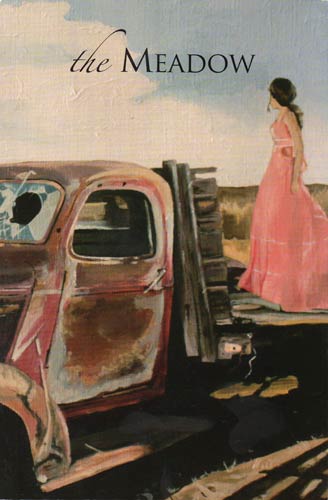The Meadow – 2014
Never have I felt a literary magazine embody its name more than the current issue of The Meadow. Its contents guide readers through a field of language which sets forth a landscape of natural beauty that’s not without its seasonal allergies. The Meadow amalgamates previously published writers like Keith Dunlap with students, such as Kirsten Jachimiak, who attend Truckee Meadows Community College where the magazine is published.
Never have I felt a literary magazine embody its name more than the current issue of The Meadow. Its contents guide readers through a field of language which sets forth a landscape of natural beauty that’s not without its seasonal allergies. The Meadow amalgamates previously published writers like Keith Dunlap with students, such as Kirsten Jachimiak, who attend Truckee Meadows Community College where the magazine is published. By combining their resources, the magazine roots itself in the now while attempting to pollinate literature’s future.
While The Meadow publishes fiction and nonfiction, this issue is dominated by poetry. The aforementioned Dunlap’s poem “The Dying Slaves” is set in three parts and works to meld a sculpture by Michelangelo of the same name with the speaker’s “morbid news” of illness. Dunlap wanders through time and space with thought tethered by the tangible remembrances of statue, picture, and postcard. These tools sculpt a speaker who finds humor in “every precious bit” of his “foolishness.” Dunlap lifts speaker and statue to heights “[e]ven cold stone death cannot rob” of, what the poet names, “pagan pleasure.” Dunlap’s poem serves to “marvel at. . . morality” creating a landscape where beauty grows above and below ground.
Similarly, Jachimiak’s poem “That Piece of Shit Single Wide” attempts to sprout from the seeded image of dilapidated trailer life. While the poet sets forth a clear image “of dirt, / weeds, bottle caps, and sun,” she eschews at opportunities for stronger line breaks. There is a useful meter within the lines chopped by a compulsion for brevity that results in talky lines. For example, the opening lines, “The linoleum was gone, / but the chips of wood / got smoothed with use,” sport a professional ear for assonance, but rhythm of their meter is broken resulting in an underwhelming musicality. However, there are images where the poet shines. For instance, the “tree’s shadow. . . made a spider’s web” for the speaker to “crawl around” in her imagination while trying to catch grasshoppers. The youthful delight of action in this poem is well-expressed. Jachimiak kicks like a dust cloud and lingers in the moment. From her “Daddy” laughing at her “silly games” to the speaker making “special dirt stew,” this poem shows a macro understanding of life through a micro moment of familial love.
Of the same pedigree is Andrea Buchanan’s “Thanksgiving on the Coast.” This poem applies the villanelle form but lacks the song of meter. The poet beautifully varies how each refrain is used, but the poem reads like prose through its long lines of varied meter. We find a lone line that oddly wraps around in a Whitman-esque fashion. While this allusion to the father of free verse is uplifting, in the case of form, it highlights the lack of attention paid to the effectiveness of song when applied to such forms as the villanelle. This does not ruin the poem as much as showcase Buchanan’s youthful experience. It is another example of how The Meadow seeks to publish the future. Students like Jachimiak and Buchanan are stars whose light have not had enough time to reach our skies, but will be approaching soon enough.
The journal also includes three fiction pieces, a nonfiction piece, and an interview. Of these, the nonfiction piece by Chelsey Clammer stands out. “Matchbook, Pennies” is a poignant story of learning to let go. The author uses lists of items to portray the inability to let go, but realizes the truest thing we should never let go is our connection to family.
In every meadow, there are vivid colors of robust flora. The literary magazine produced by Truckee Meadows Community College is no different. The Meadow is a lavish landscape of amateur and established artists. Each budding writer is well-accented by those who continue to blossom. The magazine requires a degree of patience in order to see the efforts it puts forth to produce a collection of well-rooted writers pollinating a budding future.
[www.tmcc.edu/meadow]
Reviewer bio: David Weber is a graduate student in the MAW program at Coastal Carolina University with a focus on poetry. He’s worked as an editorial assistant for the literary journal Waccamaw. He looks for nothing more than to continue the conversation of writing in all forms.





